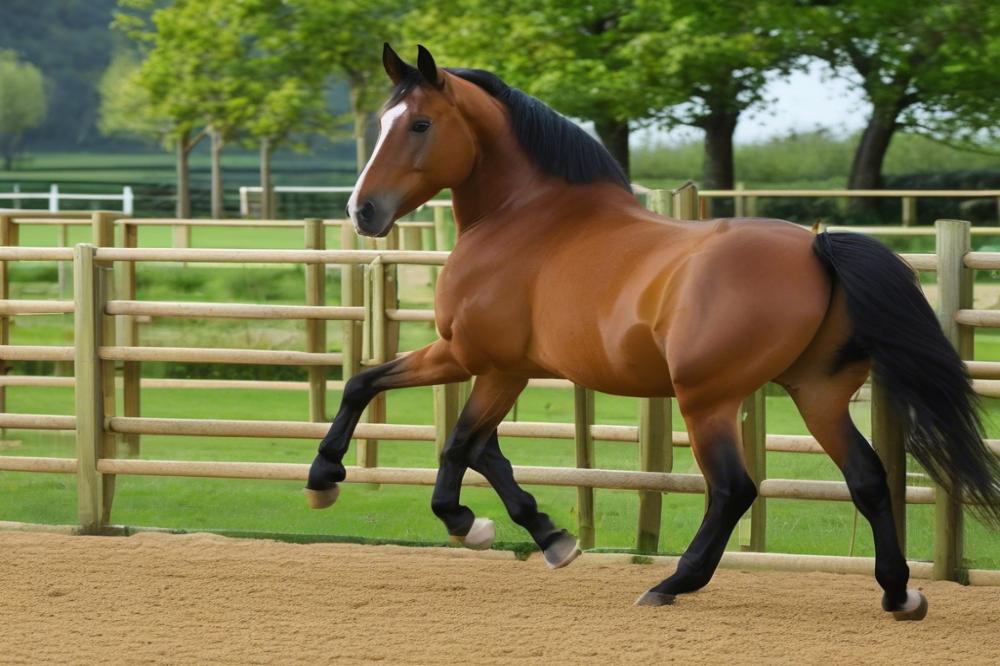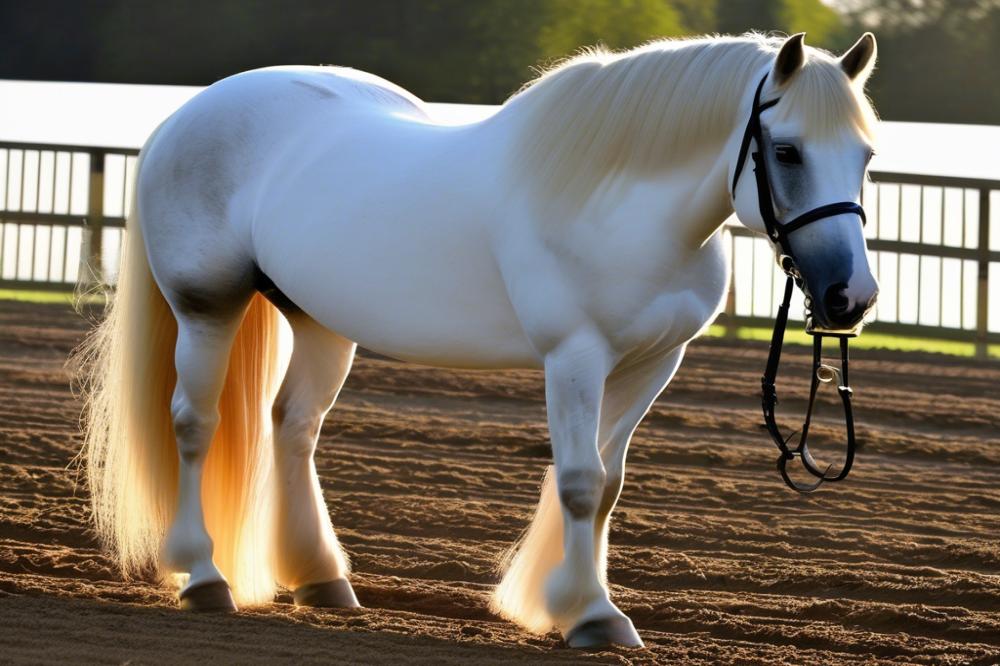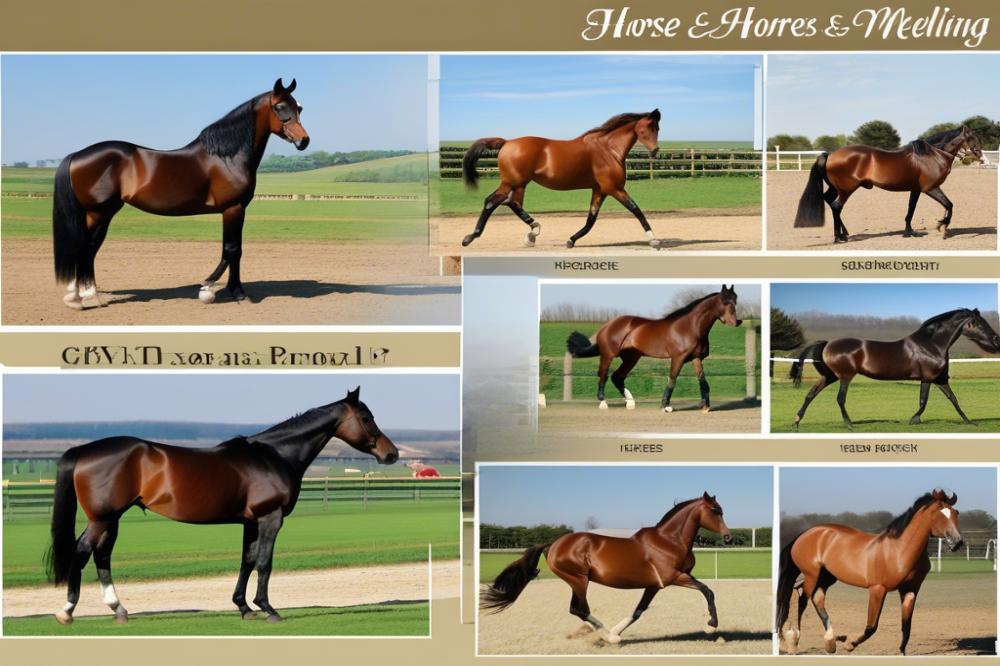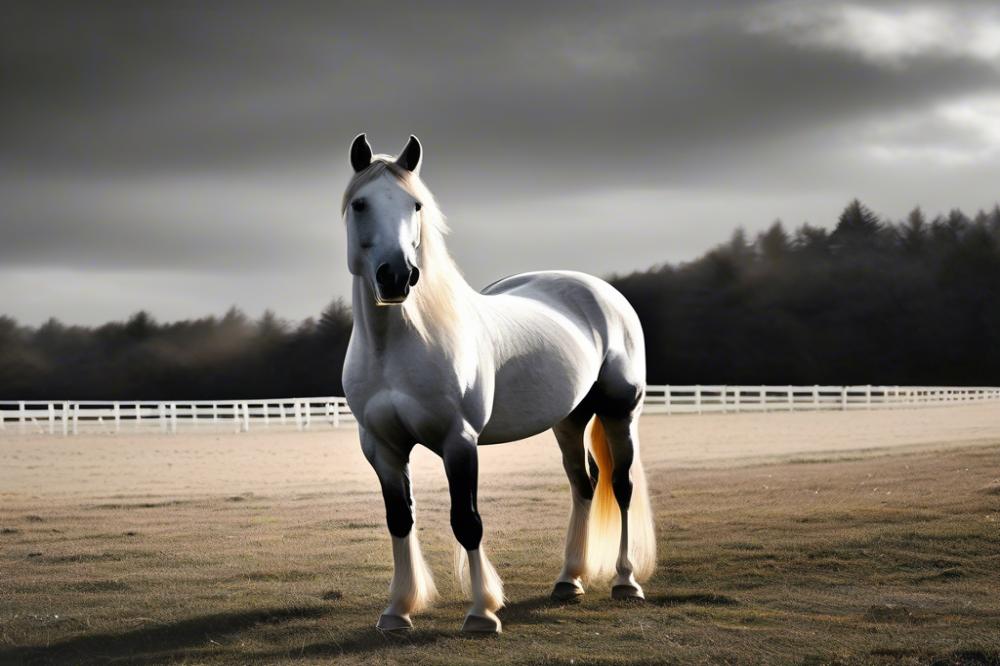Understanding the Term “Stud Horse”
Often, when people hear the term “stud horse,” they might think of a stallion with swagger, strutting around like the king of the barn. That image isn’t too far off! A stud horse is essentially a male horse that is used for breeding. These strong and impressive animals play a crucial role in equine reproduction, helping to pass on desirable traits to their offspring. It’s somewhat like matchmaking but for horses—finding the right pairs can make a huge difference in the quality of the next generation.
The significance of stud horses extends beyond just creating adorable foals. They are vital to the horse breeding industry, which has a fascinating history and a significant impact on the world’s equine population. Did you know there are millions of horses in the world? That’s a whole lot of hoofbeats! Whether it’s for racing, work, or leisure, understanding equine genetics is essential. It can even be part of a breeding guide for those looking to start their own horse care journey.
With all that in mind, this article aims to shed light on various aspects of stud horses. We want you to grasp their definition and significance, while also diving into how they contribute to the breeding of different varieties, including some of the renowned British horse breeds. Whether you’re a seasoned horse owner or simply curious about these majestic animals, you’re in the right place. Let’s embark on this exploration together and discover more about these fascinating creatures of the horse world!
Stud Horse Definition

A stud horse is a male horse specifically bred for reproduction. When we talk about these horses, we are diving into the world of horse breeding and equine reproduction. Often, they are chosen for their excellent equine characteristics, which may include their size, strength, and temperament. Not every male horse qualifies as a stud. Being a stud horse means being part of a more selective group, the crème de la crème of the equine world.
Distinction from Other Horse Classifications
It’s essential to distinguish a stud from other types of horses. Many horses serve various roles: some are racers, while others are companions or working animals. A stud’s primary role is to sire offspring. These horses are typically well-maintained through good horse care practices. Meanwhile, mares are female horses that can also be part of the breeding scene, usually seen alongside stud horses during mating seasons.
Explanation of Terminology Related to Stud Horses
Understanding the lingo can be helpful when discussing stud horses. Terms like “sire” refer to the stud’s role as a father to the foals. “Maiden mare” points to a female that hasn’t yet had foals. Keeping track of these definitions can feel like your own little glossary. It adds depth to conversations about breeding strategies, like those found in any breeding guide.
Further, breeding isn’t just about throwing two horses together and hoping for the best. Thoughtful considerations about genetics and traits come into play. Knowledge about the lineage of both the stud and the mare can greatly influence the success of the offspring. If you’re new to this world, it might feel like learning a new language, but it can be quite rewarding.
Being involved with stud horses isn’t just about the horses themselves. It’s also about their caretakers who look after them and plan for their breeding future. Horse breeding requires patience, skill, and a sprinkle of luck. So, whether you’re a curious observer or a serious breeder, understanding what a stud horse is will help you appreciate this fascinating aspect of equine life even more.
Characteristics of Stud Horses

Physical Traits Commonly Found in Stud Horses
Stud horses often have impressive physiques. Muscular bodies and strong legs are quite common among these equines. Look for a broad chest and a long neck, both of which contribute to their powerful stance. Shiny coats can be a sign of good health, too. Many have a striking presence that makes them stand out at the barn or during shows. Their size varies, but they typically range from 14 to 17 hands tall. A stud horse’s conformation can tell you a lot about its potential in breeding and performance.
Behavior and Temperament of Stud Horses
Temperament can vary quite a bit, which keeps things interesting! Some stud horses are calm and easygoing, while others can be a bit spirited and adventurous. Young stallions may display some bravado, especially when they sense a mare nearby. Social interactions play a role in their behavior. Often, they display a mix of challenging and gentle behaviors. Handlers should be cautious but remember that with proper training, most can be quite manageable. Patience and consistent training can lead to a solid relationship between horse and human. Keeping these horses mentally stimulated is key to a harmonious experience.
Health Considerations and Management
Proper horse care is crucial for the well-being of any stud horse. Regular veterinary check-ups can help catch potential issues early. Vaccinations and deworming schedules are essential. Feeding a balanced diet to support their growth and fertility is another important aspect. Stud horses may also require dental care to avoid health problems. As they grow older, certain health issues may arise, so monitoring their weight and movement is key. If considering breeding, understanding equine reproduction is essential. Following a detailed breeding guide can help ensure a successful outcome. Remember, a happy and healthy horse leads to better breeding success!
Role of Stud Horses in Breeding

Importance in Equine Genetics
Stud horses play a crucial role in the world of horse breeding. Their influence on equine genetics is significant. Breeders often seek out these horses to pass on desirable traits to their offspring. Think of it as creating the ultimate horse recipe. A stud horse with excellent equine characteristics can improve the quality of the next generation. Notably, traits like speed, strength, and temperament can be inherited. This is why choosing the right stud horse is essential. It’s not merely about looks; it’s about what the offspring might achieve in their future.
The Breeding Process Involving Stud Horses
When it comes to breeding, there’s a process to follow. First, owners need to determine the best time to breed. Horses have a specific season when they are more receptive to mating. Stud fees can be quite high, so timing is key! Next, there’s usually a mare involved. She must be in good health and ready for breeding. This is often where horse care comes into play. Keeping both the stud and mare in top condition is crucial for successful mating. Techniques like artificial insemination and natural covering are popular options in equine reproduction. Each method has its pros and cons, but both seek the same outcome: healthy foals.
Selection Criteria for Breeding
Choosing a stud horse isn’t as simple as it seems. Several criteria come into play during the decision-making process. A breeder must consider the horse’s pedigree. The lineage can tell a lot about potential offspring. Moreover, physical conformation is critical. A well-built horse usually produces well-built babies. It’s also vital to note temperament. After all, a calm horse can contribute to a calmer foal. Stud horses should also have a good performance record in their discipline. Whether jumping, racing, or showing, achievements matter. Consulting a breeding guide can help in making informed decisions. The right combination of traits can lead to exceptional results in horse breeding.
Famous Stud Horses in History
History has been graced by some remarkable stud horses. One of the most famous is Man o’ War. He raced in the early 1900s and won 20 out of 21 races. This impressive horse also became a legendary sire. His offspring left a significant mark on horse racing and breeding. He demonstrated key equine characteristics that breeders sought after.
Another notable name is Secretariat, who raced in the 1970s. Winning the Triple Crown, he set records that still stand today. After his racing career, Secretariat contributed to breeding with his strong bloodline. Many of his descendants are successful racehorses. His legacy continues to influence horse breeding practices even decades later.
Let’s not forget about Seattle Slew. He is the only horse to win the Triple Crown while still being undefeated. His genes shaped a new era in equine reproduction. Many trainers and breeders looked to him for successful traits. Seattle Slew’s impact on horse care and breeding guide lives on in today’s thoroughbreds.
Moving on to Native Dancer, a horse that captured many hearts in the 1950s. With a solid racing record, he became a top sire as well. His bloodline has mixed into so many horses today. Breeders often reference his name when discussing prestigious bloodlines.
Each of these horses showed how important good breeding is. They changed the way people look at stud horses. Their remarkable abilities showcased the significance of selecting the right traits. This led to improvements in breeding practices. What’s more, their stories add to the fascinating tapestry of equine history.
The legacy of these famous equine stars is still felt today. Not only did they win races, but they also influenced how modern horse breeding operates. Today, many horses carry hidden lines back to these champions. Breeding isn’t just about speed; it’s about building a strong foundation that carries forward.
So, the next time you hear about a champion horse, remember the giants of the past. Their stories remind us how deep the roots of horse breeding go. They crafted prestigious bloodlines that continue to thrive in the racing world. And that’s a legacy worth talking about!
Care and Management of Stud Horses
Daily Care Requirements
Taking care of a stud horse involves more than just feeding and grooming. Every day, it’s vital to check their living space for cleanliness. A tidy stall means a happy horse. Regular exercise forms another important part of their routine. Stud horses have energy to burn, so daily riding or turnout is essential. Don’t forget to spend quality time with them, too. They thrive on attention and interaction. Watching them interact with other horses can show you a lot about their temperament and equine characteristics.
Nutrition and Feeding Practices
Feeding a stud horse is like cooking for a picky eater; you want to get it right. Quality hay is the foundation of their diet. Many owners also mix in grains or special horse feeds. The key is to balance nutrients properly. Protein is important for muscle development, especially if you’re thinking about horse breeding. Always have fresh water available; hydration is crucial for overall health. If you’re unsure about portion sizes or types of food, consulting a breeding guide can be quite helpful.
Health Care and Veterinary Considerations
Health care for stud horses calls for regular check-ups. A good veterinarian can be a horse owner’s best friend. They’ll help monitor everything from vaccinations to dental care. Mind you, hoof care is just as crucial. Regular trimming and shoeing keep them sound and ready for action. Don’t overlook signs of illness or discomfort. A horse that acts off may need immediate attention. If you’re involved in equine reproduction, genetic health testing might also be on your radar. Keeping track of health records makes life easier when the breeding season comes around. It’s all part of ensuring your stud horse stays in tip-top shape and can perform at its best.
Stud Horse Industry and Market
Economic aspects of stud horse breeding
The stud horse industry plays a vital role in the world of horse care and breeding. Stud services can be quite profitable. Breeders often invest a significant amount of money in high-quality stallions. These horses boast superior equine characteristics, making them desirable for breeding purposes. The return on investment can vary greatly. Some stallions fetch fees in the thousands, while others are more modest.
Time and expertise are crucial in this field. Owners must ensure their horses are in top condition. Proper training and management lead to successful breeding outcomes. Potential buyers look for certain traits, such as strength and temperament. Market demand can shift based on trends. Breeders stay knowledgeable about what buyers want.
Trends in the market for stud services
Trends in the stud horse market often reflect changes in consumer preferences. Nowadays, many people look for horses with exceptional equine reproduction capabilities. Genetic diversity is gaining attention too. Breeders are more interested in producing foals with distinct traits. This leads to rising investments in genetic testing.
Online platforms have also changed how services are marketed. Now, potential clients can browse a wider range of stud horses. This convenience helps breeders reach a broader audience. It’s essential to stay up-to-date with these advancements. Social media showcases flashy stallions and their successful offspring. Breeders might seek out the latest breeding guides for insights. The internet has turned horse breeding into a more visible industry.
Regulation and ethics in the stud horse industry
Regulation and ethics are vital in the stud horse business. Proper guidelines protect the health of the horses and the integrity of the breeding process. Many countries have laws governing horse breeding practices. These laws help ensure that animals are treated humanely.
Ethical breeding practices are essential for the welfare of all equines involved. Responsible breeders monitor their horses closely. They provide proper care throughout the breeding cycle. Owners stepping into this field must be aware of their responsibilities. Avoiding unethical practices must be a priority for everyone.
Having a solid understanding of industry regulations keeps breeders in line. This knowledge not only fosters trust but also enhances the overall reputation of the market. Those who succeed can create a lasting legacy in the wonderful world of horse breeding.
Wrapping It All Up
To sum up our exploration of what a stud horse is, we’ve learned that these animals are not just any regular horses. They are specifically chosen for breeding due to their exceptional qualities that can pass on to their offspring. Understanding the stud horse definition gives us insight into the careful selection process that breeders undertake, driven by both passion and purpose.
These majestic creatures play a significant role in the equine world. They help maintain and enhance breed traits, contributing to the future of horse racing, work, and companionship. Their influence can ripple through generations of horses, affecting not just their physical characteristics but also aspects like temperament and performance. Just like how a good recipe for a family dish can be handed down through the years, the legacy of a stud horse can shape horse herds for decades to come.
When considering breeding, it’s essential to think about responsible practices. A decision to breed should always be made with the utmost care, focusing on the horse’s health and the welfare of future foals. After all, breeding should not be like attempting to throw draw reins on horses in a hurry to get them moving; it requires patience, knowledge, and a commitment to doing it right. Each horse deserves thoughtful consideration and planning, contributing to the richness of horse herd behavior.
In closing, let’s remember that behind the term “stud horse,” there are stories, dedication, and a love for these incredible animals. As we look to the future, may we all strive to honor this bond through responsible breeding practices. So saddle up with care, and let us embark on this fascinating journey of horse breeding together!



